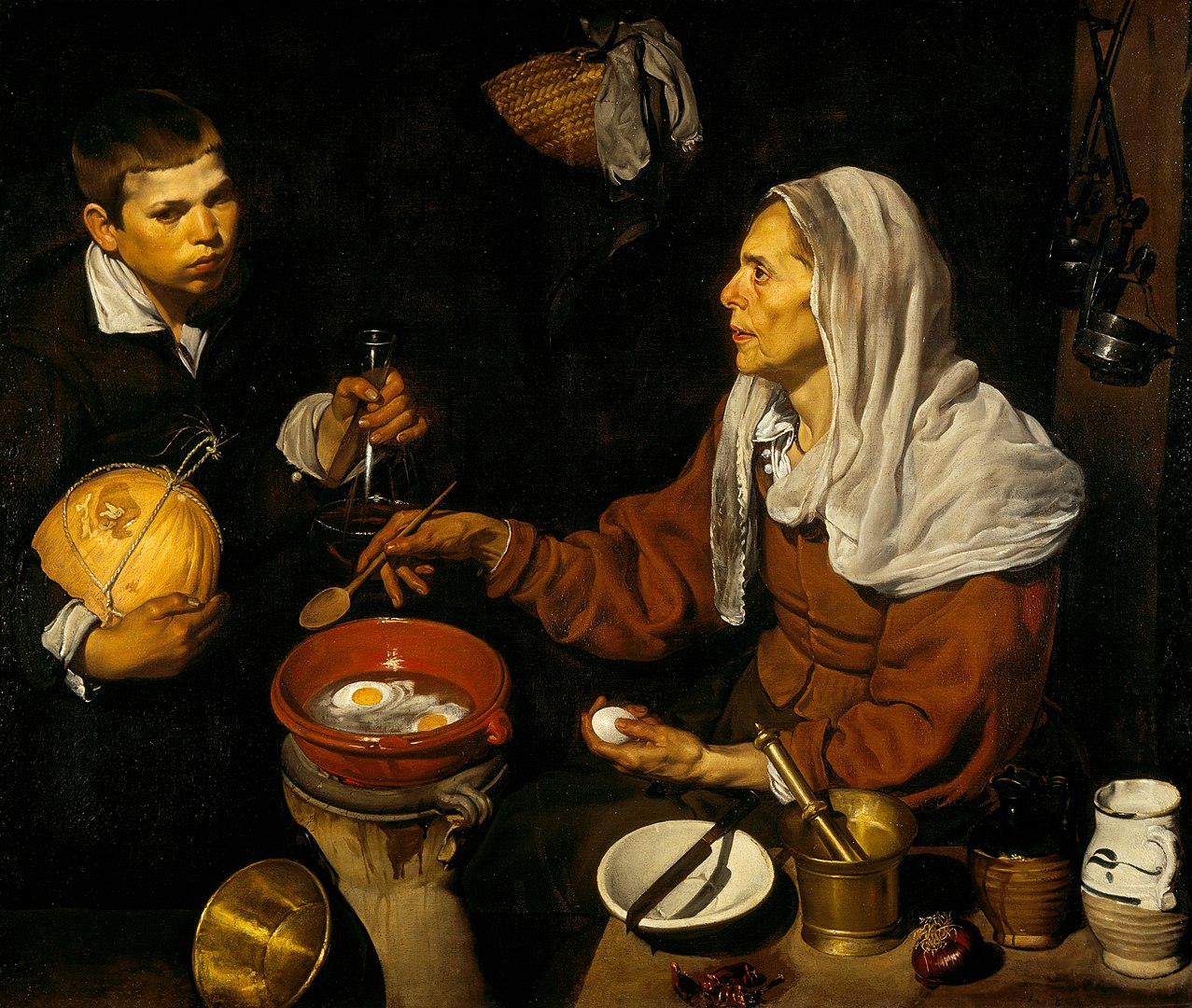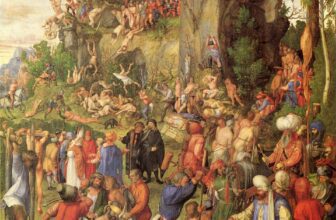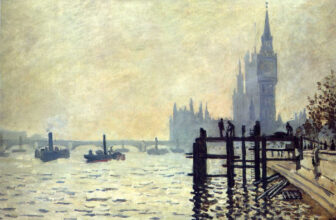
What Is Happening in Old Woman Frying Eggs Painting
Art history is often defined by monumental works of grandeur, epic mythological scenes, religious iconography, or lavish portraits of nobility. But within that rich panorama, certain paintings stand out for their simple, intimate portrayal of ordinary life. One such remarkable work is Old Woman Frying Eggs by Diego Velázquez, a masterpiece of realism painted in 1618. This early work of Velázquez captures the mundane with such intense observation and psychological depth that it becomes a quiet yet powerful reflection on humanity, age, labor, and the passage of time.
In this article, we will explore what Old Woman Frying Eggs is all about, who painted it, what is happening in the painting, and delve into its symbolism, artistic style, and interpretation. We will also discuss the current location of this iconic painting and its place within the broader art historical canon.
Who Painted Old Woman Frying Eggs?
Old Woman Frying Eggs was painted by Diego Rodríguez de Silva y Velázquez, one of the most celebrated Spanish painters of the 17th century and a leading figure of the Spanish Golden Age. Born in Seville in 1599, Velázquez showed prodigious talent from a young age. By the age of 18 or 19, he had already begun producing works that displayed remarkable technical mastery and psychological insight. This painting, completed in 1618, marks one of his early triumphs before he moved to Madrid to become the court painter for King Philip IV of Spain.
Despite his later fame for court portraits, Velázquez never abandoned his fascination with the ordinary. His early bodegones, a Spanish term for kitchen or tavern scenes, reflect a deep appreciation for the daily lives of humble people. These bodegones were more than genre paintings; they were moral and philosophical statements on the human condition. Old Woman Frying Eggs is arguably the most famous of these.
What Is Old Woman Frying Eggs All About?
On the surface, Old Woman Frying Eggs appears to be a straightforward depiction of a domestic scene. An elderly woman sits by a table, frying eggs in a clay pan over a portable brazier, her hands frozen in the precise moment of culinary labor. A young boy stands beside her, holding a melon and a flask, watching attentively. Surrounding them are various kitchen items: a mortar and pestle, a cooking pot, ceramic vessels, a ladle, and garlic cloves, all meticulously painted in astonishing detail.
But beneath this apparent simplicity lies a layered, almost philosophical meditation on age, gender roles, labor, and perception. The painting encapsulates a moment in time that is both intensely real and subtly poetic. The viewer is invited not only to observe but also to reflect.
What Type of Art Is Old Woman Frying Eggs?
Old Woman Frying Eggs falls under the category of bodegón painting, a unique genre that emerged in 17th-century Spain. Bodegones depict scenes from kitchens or taverns, often featuring still life arrangements of food, cookware, and everyday objects alongside human figures engaged in routine activities. Unlike the extravagant still life paintings of the Dutch Golden Age, which often conveyed wealth and abundance, Spanish bodegones emphasized austere realism and the humble dignity of ordinary people.
Velázquez’s bodegones are distinguished by their tenebrist style, a dramatic use of light and shadow reminiscent of Caravaggio. He often painted his subjects emerging from a dark background, with a single source of light creating strong contrasts that highlight texture, volume, and materiality. In Old Woman Frying Eggs, the eggs glisten, the utensils gleam, and the woman’s wrinkled face seems carved from the shadows. This realism is not merely technical; it evokes a mood, a quiet sense of contemplation.
What Is Happening in Old Woman Frying Eggs?
At first glance, the painting shows a routine kitchen scene, yet Velázquez transforms this mundane act into a timeless composition. The old woman, central to the composition, is caught in mid-action as she cooks eggs. Her concentration is evident in the subtle tilt of her head and the way her hands hold the utensils. She is not performing for an audience; she is absorbed in her task, completely unaware of being observed.
The young boy, thought to be an assistant or perhaps her grandson, watches her intently. His presence is more than ornamental. He represents the continuity of generations, the young observing and learning from the old. There’s a palpable tension in the stillness of the scene, a suspended moment filled with meaning.
The arrangement of objects on the table and around the figures is no accident. Each item contributes to the overall composition and emotional tone. The ceramic vessels, raw garlic, and kitchenware are painted with such precision that they take on a tactile presence. They are not background props; they are characters in their own right.
Symbolism and Interpretation of Old Woman Frying Eggs
Though grounded in realism, the painting is rich in symbolism. The most immediate symbolic contrast is between the young boy and the old woman, youth and age, beginning and end. This duality adds a philosophical dimension to the painting. The woman’s age is emphasized through her lined face and worn hands, hinting at a life of labor and experience. The boy, in contrast, is full of potential and curiosity. Their interaction suggests a transference of knowledge, a quiet lesson in survival and domestic skill.
The eggs themselves have symbolic resonance. In Christian iconography, eggs can represent rebirth and resurrection, but in this secular context, they also symbolize fragility and transformation. The act of frying, transforming raw eggs into nourishment, could be read as a metaphor for life’s processes and the care needed to sustain them.
The brazier is another potent symbol. It serves as a source of warmth and sustenance, but also recalls the impermanence of fire and the passage of time. Fire is fleeting, much like life itself. The utensils, vessels, and ingredients are arranged almost like a still life within the scene, evoking a meditative atmosphere.
Moreover, the light in the painting plays a symbolic role. The chiaroscuro technique highlights the woman’s face and hands, suggesting wisdom, labor, and purpose. The background recedes into darkness, enhancing the isolation and timelessness of the scene. This is not merely a domestic episode; it is an allegory of existence, age, and dignity.
Artistic Techniques and Style
Velázquez’s technique in Old Woman Frying Eggs is nothing short of extraordinary. Despite being only 19 when he painted it, he demonstrates a mature command of realism, composition, and psychological depth.
1. Naturalism
Velázquez was among the earliest European artists to master naturalism, the accurate depiction of life without idealization. Every element, from the folds of the woman’s headscarf to the reflective surfaces of the ceramic pots, is rendered with precision.
2. Chiaroscuro
Velázquez employs chiaroscuro to great effect, drawing the viewer’s eye to the key elements: the woman’s expression, the frying eggs, and the still life arrangement. The single, directional light source enhances the realism and sets a contemplative mood.
3. Composition
The triangular arrangement of the woman, the boy, and the eggs creates a stable yet dynamic composition. The eye moves naturally from the old woman’s face to her hands and then to the boy, guided by the curves of the vessels and the horizontal line of the table.
4. Psychological Insight
Though silent, the painting speaks volumes through the expressions and posture of its subjects. The woman’s furrowed brow and the boy’s attentive gaze create a narrative tension, inviting viewers to project their own interpretations.
When Velázquez painted Old Woman Frying Eggs in 1618, Spain was experiencing a complex socio-political landscape. The country was still a dominant empire, but economic challenges and social inequality were becoming more apparent. The Catholic Church wielded immense power, and much of the art produced at the time was religious in nature.
Against this backdrop, Velázquez’s bodegones offered a revolutionary departure. By focusing on the working class and depicting them with dignity and precision, he subtly challenged societal hierarchies. His paintings suggested that the lives of common people were worthy of artistic representation and contemplation.
Moreover, the influence of Caravaggio and the Italian Tenebrists is evident in Velázquez’s early works. Though Velázquez would later travel to Italy, it’s clear that even at a young age, he was absorbing and adapting the dramatic lighting and realism of the Italian masters into his own unique style.
Where Is Old Woman Frying Eggs Painting Located Today?
Today, Old Woman Frying Eggs is housed in the Scottish National Gallery in Edinburgh, Scotland. It is one of the most prized pieces in the collection, attracting art lovers, scholars, and casual visitors alike.
The painting was acquired by the gallery in the 1950s and has since become a focal point for discussions on realism, genre painting, and Velázquez’s development as an artist. Its presence in a public museum allows viewers from around the world to engage with this extraordinary work and reflect on its enduring relevance.
Old Woman Frying Eggs remains one of the defining works of Velázquez’s early career. It laid the foundation for the psychological acuity and technical brilliance that would later define his royal portraits and larger compositions. Artists such as Édouard Manet, who called Velázquez “the painter of painters,” drew direct inspiration from his bold realism and unvarnished humanity.
This painting is not just a relic of art history, it is a timeless meditation on life’s quiet moments. It asks us to look closer, to see the extraordinary within the ordinary, and to acknowledge the invisible labor that sustains daily life.
Diego Velázquez’s Old Woman Frying Eggs is a masterclass in observational painting, imbued with quiet power and profound meaning. Beneath its simple subject lies a complex interplay of symbolism, realism, and emotion. It speaks to the dignity of labor, the passage of time, and the universal truths that bind humanity across generations.
More than four centuries after it was painted, it continues to captivate and challenge viewers, inviting us into a moment suspended in time, a moment that, despite its age, still feels strikingly familiar.




